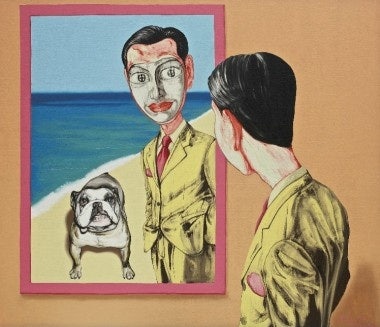Annual Rate Of Return On Art Investments Stood At Around 26 Percent Over Past Six Years#

Following up a banner year in which the country's art market exceeded 200 billion yuan (US$31.75 billion), continued diversification away from China's stock market and real estate sector is expected to fuel the market in 2012. Driven by huge gains by domestic auction houses China Guardian and Beijing Poly, which achieved respective turnover of 11.23 billion yuan and 12.1 billion yuan last year, this week Xinhua foresees continued strength in the domestic Chinese auction world in the year ahead, though excess speculation could see some bubbles within the traditional Chinese art, antique and specialty auction segments cause hiccups.
From Xinhua:
An art market cannot thrive without a booming economy. Despite weak external demand due to wobbly recovery in the United States and the sovereign debt crisis in the European Union, China's economy managed to expand by 9.4 percent during the first three quarters of 2011.
When a country's per capita GDP reaches 1,000-2,000 U.S. dollars, its citizens create demand for art investment. When the country's per capita GDP hits 5,000 U.S. dollars, its art market will enter a fast expansion period, experts said.
Although art investment in China is still at an early stage as its GDP per head just reached 4,000 U.S. dollars, market participants believe the market has huge growth potential.
"China's art market is facing tremendous opportunities, underpinned by the prosperity of the cultural industry and the gradual maturity of consigners, buyers and other market players," said Kou Qin, vice president of China Guardian Auction Co.
The article goes on to discuss the growing interest in art funds in China, noting that China had more than 70 art funds as of November 18 of last year, with initial capital of 5.77 billion yuan (US$914.57 million), noting that excess speculation in nascent domestic Chinese art funds could cause problems:
The holding period for art works is a key factor in generating returns. "Generally speaking, the holding period for art funds should be at least 3-5 years. But art funds in China hold for only a year-and-a-half on average because investors do not want to wait that long," said Gan Xuejun, chairman of Beijing Huachen Auctions Co.
Gan suggested domestic art funds learn from the British Rail Pension Fund, which generated annual returns of over 20 percent partly because the fund did not rush to monetize art works it bought and instead waited for a good time to sell.
"It takes time for an art fund to establish a position, wait until the price of the works rise and then close the position. As illiquid assets, art suits investors rather than speculators," Gan said.
